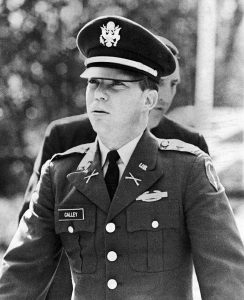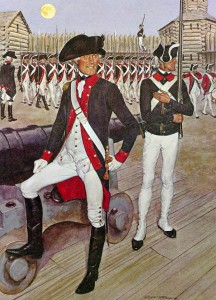Written By: Patrick R Jennings, Ph.D.
Chief, Programs and Education, National Museum of the United States Army

Following the Korean War, U.S. military leadership envisioned an army whose historic virtues would be reinforced with massive application of science and technology focused through the lens of firepower. Operation Sunbeam would be among the first efforts to offset communist military bulk with American scientific knowhow, bringing forward one fascinating result—the nuclear armed M28/M29 Davey Crockett Recoilless Rifle.
The genesis of Operation Sunbeam and the Davey Crockett lay between two issues, the looming threat of a Soviet invasion in Europe and the civil desire not to utterly devastate Western Europe to save it from communism. On one side the Soviets, capable of fielding more than three million soldiers in about 210 divisions, and on the other a need to inflict tactical damage without resorting to strategic weapons. From this challenge U.S. Army officials decided they needed a powerful tactical weapon for halting, or at least delaying, the seemingly endless columns of troops and tanks which might one day pour out of East Germany and the USSR. In 1962 the first weapon tested was the M28 120mm recoilless rifle armed with the M-388 atomic round built around the W54 warhead – all designed to be bolted to the top of an armored personnel carrier, deployed as a ground-fired weapon, or fixed to an M-38A1 jeep. The M-388 atomic round offered the interesting option in that it had a switch allowing the operator to select the yield of the blast.

Unlike its steely-eyed namesake, the Davey Crockett M28 proved to be a rather inaccurate weapon. It relied instead on the immediate lethality of the warhead which could kill out to a quarter of a mile from the impact point – a good thing for a weapon with a range less than 1.7 miles. The Davey Crockett was deployed to Germany as part of the “Atomic Battle Group” concept that placed tactical nuclear weapons at the squad level. The organization of the 3d Armored Division offers a look at the typical deployment of the M28. Davey Crockett Sections were assigned to Heavy Mortar Platoons as part of Headquarters Companies of both infantry and armored battalions. Over time the M28 was augmented with the slightly larger M29 allowing for more maneuverability and greater depth.
Despite what may seem like a whacky idea today, the Davey Crockett was a critical weapon in the planned defense of Western Europe. The idea of attacking an enemy with smaller tactical atomic blasts rather than larger warheads (up to four megatons on the Redstone missile) was viewed so positively by the West Germans that their defense minister, Franz Joseph Strauss, promoted the idea of equipping German brigades with the weapon – an idea quickly set aside by U.S. leaders as they feared the German defense system would become entirely dependent on tactical nuclear weapons. Atomic Battle Groups were deployed across West Germany, in Korea, and elsewhere between 1961 and 1971. During that time 2,100 M28 and M29 Davy Crockett Weapon Systems were deployed.

Today the Davey Crockett holds the distinction of being one of the smallest atomic weapons ever developed by the United States and was the last nuclear weapon tested by the U.S. in the open atmosphere at the Nevada Test Range. The M28 Davey Crockett will be displayed in the “Fighting for the Nation” Gallery just outside the “Cold War” Gallery.



